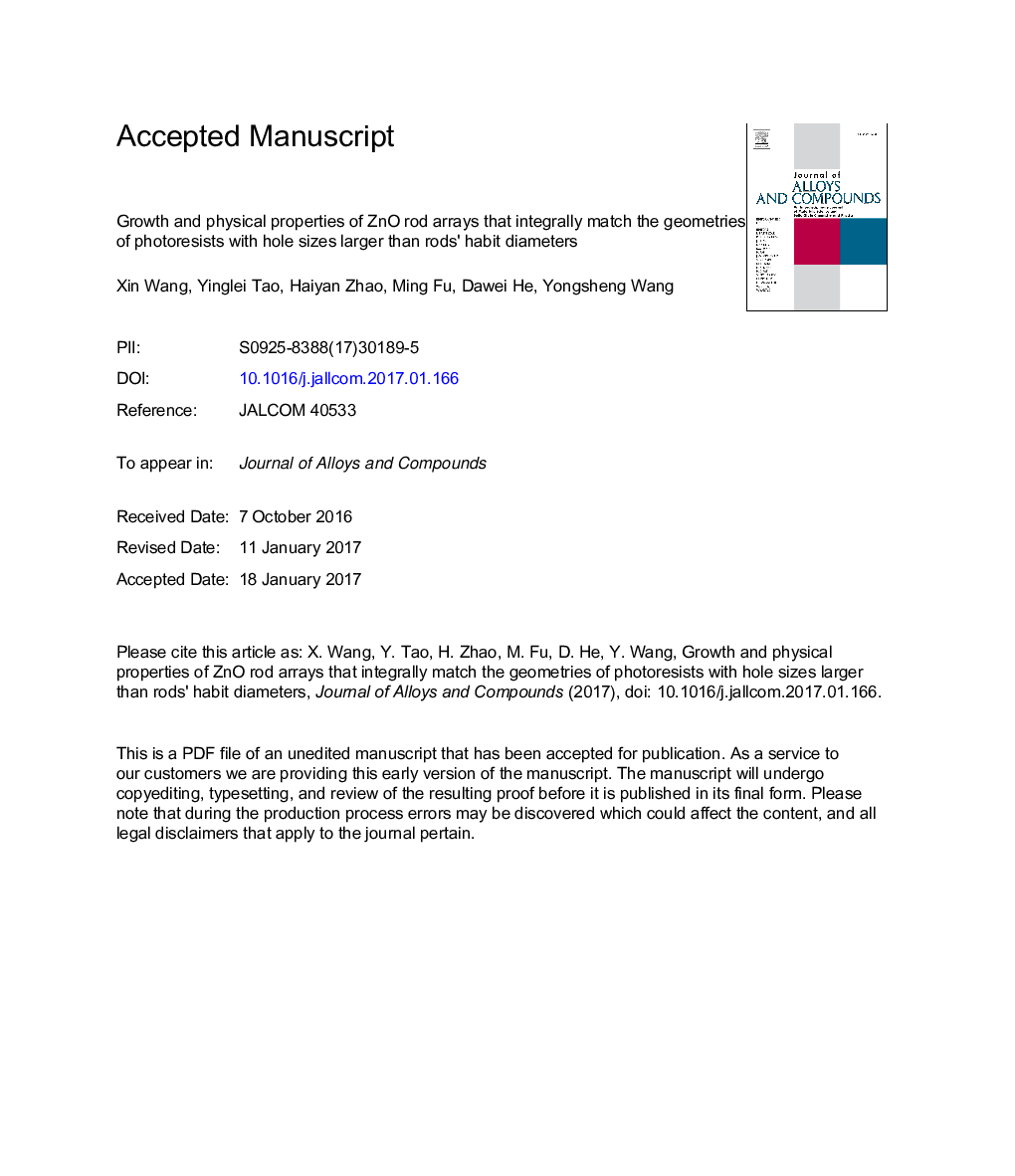| Article ID | Journal | Published Year | Pages | File Type |
|---|---|---|---|---|
| 5459974 | Journal of Alloys and Compounds | 2017 | 24 Pages |
Abstract
Bottom-up and top-down methods can be combined to create well-designed two-dimensional rod arrays for use in optoelectronics. Toward this end, the bottom-up material growth should follow the exact input of the top-down surface patterning, for example, the growth morphologies should integrally match to the geometries of the patterning. Through the repeated use of appropriate amounts of sodium citrate and polyethylenimine, ZnO rod arrays, in which each rod integrally matched with restriction holes in the surfaces, were formed even when the diameters of restriction holes were much larger than the original habit diameters of the ZnO rods. The diameters and lengths of the ZnO rods were varied by adjusting the diameters of photoresist holes, the concentrations of precursors in solution, and the reaction time. This method was successfully extended the diameter of integrally matching growth of ZnO rods to micrometer scale. The effects of the restriction diameters, the concentration of adjuvants, and the crystallinity of the seeds on integrally matching growth of ZnO rods are discussed. The photoluminescence spectra and crystallinities of the ZnO rods produced in different environments were characterized, revealing that a smaller photoresist aperture improved crystallization quality. The photoluminescence spectra of ZnO rods with different growth times and adjuvant concentrations were also explored. Fibrous ZnO/Cu2O heterostructures were successfully synthesized via the growth of ZnO rods. The electrical properties of ZnO/Cu2O and ZnO rods/Si heterojunctions were investigated, and the crystallinities of the ZnO rods were shown to change based on the different synthesis conditions used. This method for the integrally matching growth of ZnO using photoresist patterns was also generalized to ZnO tubes and rings, which individually match to single restriction hole.
Related Topics
Physical Sciences and Engineering
Materials Science
Metals and Alloys
Authors
Xin Wang, Yinglei Tao, Haiyan Zhao, Ming Fu, Dawei He, Yongsheng Wang,
